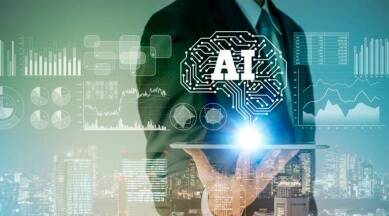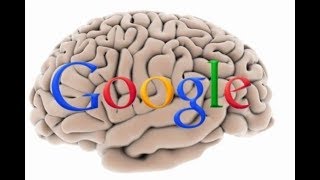
Predictive analysis can be used to predict individual unit sizes within a population. Predictive analysis is something humans have been doing for hundreds and even decades. While it can be slower and more error-prone, it has been a fundamental part of machine learning for quite some time. Machine learning utilizes artificial neural networks for large-scale data analysis. Although this method is more accurate than predictive analytics in many cases, there are still some drawbacks.
Strengths
Predictive Analytics has many applications. Predictive analytics is useful for many purposes. It can predict buyer behavior and predict growth of diseases. It can also calculate how much a bank client spends in a given month. It can also help predict equipment wear. Predictive analytics can also be useful for businesses, such as those in the weather industry. Predictive analytics, which uses satellites to forecast weather conditions, can be done months in advance.

Predictive analytics and machine learning are useful for businesses in many different fields. If the approach isn't properly implemented, it can hinder their implementation. A good architecture is necessary for predictive analytics. It also needs high-quality data. It is also important to prepare the data. Input data can come from many sources, including big data. It is essential to prepare data in a cohesive, centralised format.
Advantages
Although the advantages of predictive analytics and machine learning are many, there are also a number of potential drawbacks. For example, predictive models can narrow the range of behavior possible. They could miss out on business opportunities. For example, analytics-driven business processes may fail to consider up-selling and bundling of products. This limitation limits the potential for predictive analytics or machine learning.
While predictive technology has many benefits, there are also some drawbacks. One example is that companies might invest in AI but do not see any immediate results. Some companies may not yet be ready for this technology's potential. Companies must weigh the risks and benefits before implementing AI. For instance, there may be a risk of becoming redundant if their business does not benefit from AI.
Next step after predictive analytics
Machine learning can help with many different applications, such customer segmentation or predictive marketing. Predictive analysis can help segment customers based their purchase patterns and tailor marketing campaigns accordingly. Machine learning helps sellers to understand customer satisfaction levels and forecast future needs. Machine learning models can also help healthcare providers diagnose patients more accurately and quickly. This type of analysis can improve patient care and reduce readmission rates. It is an important aspect of the evolution and application of healthcare technology.

Machine learning algorithms use past data in order to predict future outcomes. You can find big data in the form of equipment log files and images, as well as audio and video. Machine learning algorithms recognize patterns in big data and recommend actions to follow to achieve the best results. This technology can be applied to a variety of industries, including healthcare, aerospace, manufacturing, and finance. Machine learning algorithms are able to help all these industries make better, more informed decisions and take informed actions.
FAQ
What are some examples AI apps?
AI is used in many areas, including finance, healthcare, manufacturing, transportation, energy, education, government, law enforcement, and defense. These are just a few of the many examples.
-
Finance - AI has already helped banks detect fraud. AI can detect suspicious activity in millions of transactions each day by scanning them.
-
Healthcare – AI is used in healthcare to detect cancerous cells and recommend treatment options.
-
Manufacturing – Artificial Intelligence is used in factories for efficiency improvements and cost reductions.
-
Transportation - Self-driving cars have been tested successfully in California. They are now being trialed across the world.
-
Utilities can use AI to monitor electricity usage patterns.
-
Education - AI can be used to teach. Students can use their smartphones to interact with robots.
-
Government - AI can be used within government to track terrorists, criminals, or missing people.
-
Law Enforcement - AI is used in police investigations. Investigators have the ability to search thousands of hours of CCTV footage in databases.
-
Defense – AI can be used both offensively as well as defensively. Offensively, AI systems can be used to hack into enemy computers. Protect military bases from cyber attacks with AI.
AI: Why do we use it?
Artificial intelligence is a branch of computer science that simulates intelligent behavior for practical applications, such as robotics and natural language processing.
AI is also referred to as machine learning, which is the study of how machines learn without explicitly programmed rules.
AI is widely used for two reasons:
-
To make our lives easier.
-
To be able to do things better than ourselves.
Self-driving automobiles are an excellent example. We don't need to pay someone else to drive us around anymore because we can use AI to do it instead.
Why is AI important?
According to estimates, the number of connected devices will reach trillions within 30 years. These devices will cover everything from fridges to cars. Internet of Things (IoT), which is the result of the interaction of billions of devices and internet, is what it all looks like. IoT devices will be able to communicate and share information with each other. They will also have the ability to make their own decisions. For example, a fridge might decide whether to order more milk based on past consumption patterns.
It is predicted that by 2025 there will be 50 billion IoT devices. This is a tremendous opportunity for businesses. But, there are many privacy and security concerns.
What are the potential benefits of AI
Artificial Intelligence, a rapidly developing technology, could transform the way we live our lives. Artificial Intelligence has revolutionized healthcare and finance. And it's predicted to have profound effects on everything from education to government services by 2025.
AI has already been used to solve problems in medicine, transport, energy, security and manufacturing. There are many applications that AI can be used to solve problems in medicine, transportation, energy, security and manufacturing.
What makes it unique? Well, for starters, it learns. Computers learn independently of humans. Instead of being taught, they just observe patterns in the world then apply them when required.
This ability to learn quickly is what sets AI apart from other software. Computers can quickly read millions of pages each second. They can recognize faces and translate languages quickly.
And because AI doesn't require human intervention, it can complete tasks much faster than humans. It can even surpass us in certain situations.
In 2017, researchers created a chatbot called Eugene Goostman. The bot fooled dozens of people into thinking it was a real person named Vladimir Putin.
This shows how AI can be persuasive. Another benefit is AI's ability adapt. It can be easily trained to perform new tasks efficiently and effectively.
This means that companies do not have to spend a lot of money on IT infrastructure or employ large numbers of people.
Statistics
- While all of it is still what seems like a far way off, the future of this technology presents a Catch-22, able to solve the world's problems and likely to power all the A.I. systems on earth, but also incredibly dangerous in the wrong hands. (forbes.com)
- By using BrainBox AI, commercial buildings can reduce total energy costs by 25% and improves occupant comfort by 60%. (analyticsinsight.net)
- A 2021 Pew Research survey revealed that 37 percent of respondents who are more concerned than excited about AI had concerns including job loss, privacy, and AI's potential to “surpass human skills.” (builtin.com)
- The company's AI team trained an image recognition model to 85 percent accuracy using billions of public Instagram photos tagged with hashtags. (builtin.com)
- According to the company's website, more than 800 financial firms use AlphaSense, including some Fortune 500 corporations. (builtin.com)
External Links
How To
How to set Alexa up to speak when charging
Alexa, Amazon’s virtual assistant, is able to answer questions, give information, play music and control smart-home gadgets. You can even have Alexa hear you in bed, without ever having to pick your phone up!
Alexa allows you to ask any question. Simply say "Alexa", followed with a question. She'll respond in real-time with spoken responses that are easy to understand. Alexa will improve and learn over time. You can ask Alexa questions and receive new answers everytime.
You can also control lights, thermostats or locks from other connected devices.
Alexa can also adjust the temperature, turn the lights off, adjust the thermostat, check the score, order a meal, or play your favorite songs.
Alexa can talk and charge while you are charging
-
Step 1. Turn on Alexa Device.
-
Open Alexa App. Tap Settings.
-
Tap Advanced settings.
-
Select Speech Recognition
-
Select Yes, always listen.
-
Select Yes to only wake word
-
Select Yes, then use a mic.
-
Select No, do not use a mic.
-
Step 2. Set Up Your Voice Profile.
-
Enter a name for your voice account and write a description.
-
Step 3. Step 3.
After saying "Alexa", follow it up with a command.
Ex: Alexa, good morning!
Alexa will reply if she understands what you are asking. Example: "Good Morning, John Smith."
If Alexa doesn't understand your request, she won't respond.
If you are satisfied with the changes made, restart your device.
Notice: If the speech recognition language is changed, the device may need to be restarted again.